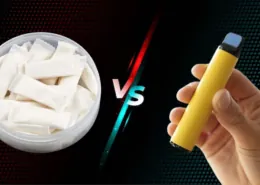The Evolution of Nicotine Pouches: From Swedish Snus to Modern Alternatives
Sweden boasts the lowest tobacco-related mortality rate in Europe, despite having tobacco use rates similar to other countries, including the UK. This phenomenon, known as the Swedish Experience, can be attributed to the widespread use of snus, a smoke-free, moist, pasteurized tobacco product, instead of cigarettes. The story behind snus plays a crucial role in the development and popularity of innovative smoke-free alternatives, such as nicotine pouches.
The Rise of Snus in Scandinavia
Snus has been a part of Scandinavian culture for centuries, but it nearly disappeared in the mid-1900s as cigarettes became a symbol of modernism. However, snus consumption persisted among the working class, and a significant shift occurred in the 1960s and 1970s, marking the beginning of the snus evolution.
Several key factors contributed to the resurgence of snus:
- The 1964 report on smoking and public health, commissioned by President John F. Kennedy, highlighted the elevated risks associated with cigarette use, leading to increased public awareness and action1.
- The introduction of the iconic round snus can in 1967, which kept the product fresh for longer periods compared to previous packaging.2
- The development of portion snus in the early 1970s, providing an alternative to traditional loose form snus and a product that could compete with cigarettes.
Over the following decades, cigarette sales decreased while snus consumption increased, with original portion snus evolving into various forms, such as white portion, slim portion, super slim, and all-white pouches.
The Dual Nature of Nicotine
The success of snus in attracting smokers and the Swedish Experience paradox have challenged the notion that nicotine is exclusively harmful. Cancer Research UK states,
“The general medical position is that nicotine itself poses few health risks, except among certain vulnerable groups.”
While nicotine is the primary driver of tobacco dependency, it carries a significantly lower risk compared to the toxic chemicals and carcinogens found in tobacco smoke. The realization that nicotine could be used in alternative ways to support smoking cessation efforts has fueled innovation in smoke-free alternatives, with nicotine pouches emerging as one of the fastest-growing products.
Nicotine Pouches vs. Snus: Understanding the Difference
Snus, a type of tobacco available in loose or pouch form, is placed under the upper lip to release nicotine. While popular in Sweden and Norway, snus is illegal in most European countries, including the UK. Although snus does not require burning or smoking, it still contains tobacco and can cause negative side effects and illnesses, albeit to a lesser extent than smoking.
In contrast, nicotine pouches do not contain tobacco. Inspired by Swedish snus, nicotine pouches are used similarly by placing a pouch under the upper lip to release nicotine. As they are tobacco-free, nicotine pouches are legal to purchase and use in the UK. Designed as an alternative to smoking, nicotine pouches allow users to manage nicotine cravings during a quit attempt without the need for tobacco, smoke, or vapor.
The Advantages of Nicotine Pouches
Nicotine pouches offer a convenient and discreet solution that can be used alone or in conjunction with other alternatives, such as vape kits. As they do not produce smoke or vapor, nicotine pouches can be used in various settings, including public transport, flights, indoors, and at work.
To effectively manage nicotine cravings, nicotine pouches come in a wide range of strengths, from mild options like those from Helwit to extreme strength varieties like those from Lost Mary Airplane Mode and Pablo. This allows users to find the ideal strength that matches their usual nicotine intake, helping to minimize withdrawal symptoms.
Nicotine pouches also offer a variety of flavors, from refreshing mint and menthol to fruity options like berry and citrus, enhancing the user experience.
Using Nicotine Pouches
Using nicotine pouches, also known as nicopods, is straightforward and does not require additional accessories. Users simply place a pouch between their upper lip and gum, leaving it in place for 5-30 minutes. As saliva dampens the pouch, it releases flavor and nicotine. After use, the pouch can be discarded in any standard bin.
Nicotine pouches come in a plastic “can” that keeps them fresh and makes them easy to store and carry. The can often features a built-in storage compartment for used pouches when a bin is not immediately accessible.
It is crucial to note that nicotine pouches should not be swallowed, chewed, or sucked, and users may experience a tingling sensation in the area around the pouch as the nicotine is released.
References:
- The 1964 US Surgeon General’s report on smoking and health https://onlinelibrary.wiley.com/doi/full/10.1111/add.16007 ↩︎
- Snus history https://www.snusochtandsticksmuseum.se/en/history/snus/snus-history/ ↩︎
- Bestselling Vapes in UK After Disposable Ban: What to Stock 2025 - August 8, 2025
- Argentina Debates Stricter Vape Laws Amid Prohibition Failures - August 8, 2025
- Nigeria Advocacy Group Urged to Hike Tobacco & Vape Tax by 100% - August 8, 2025









